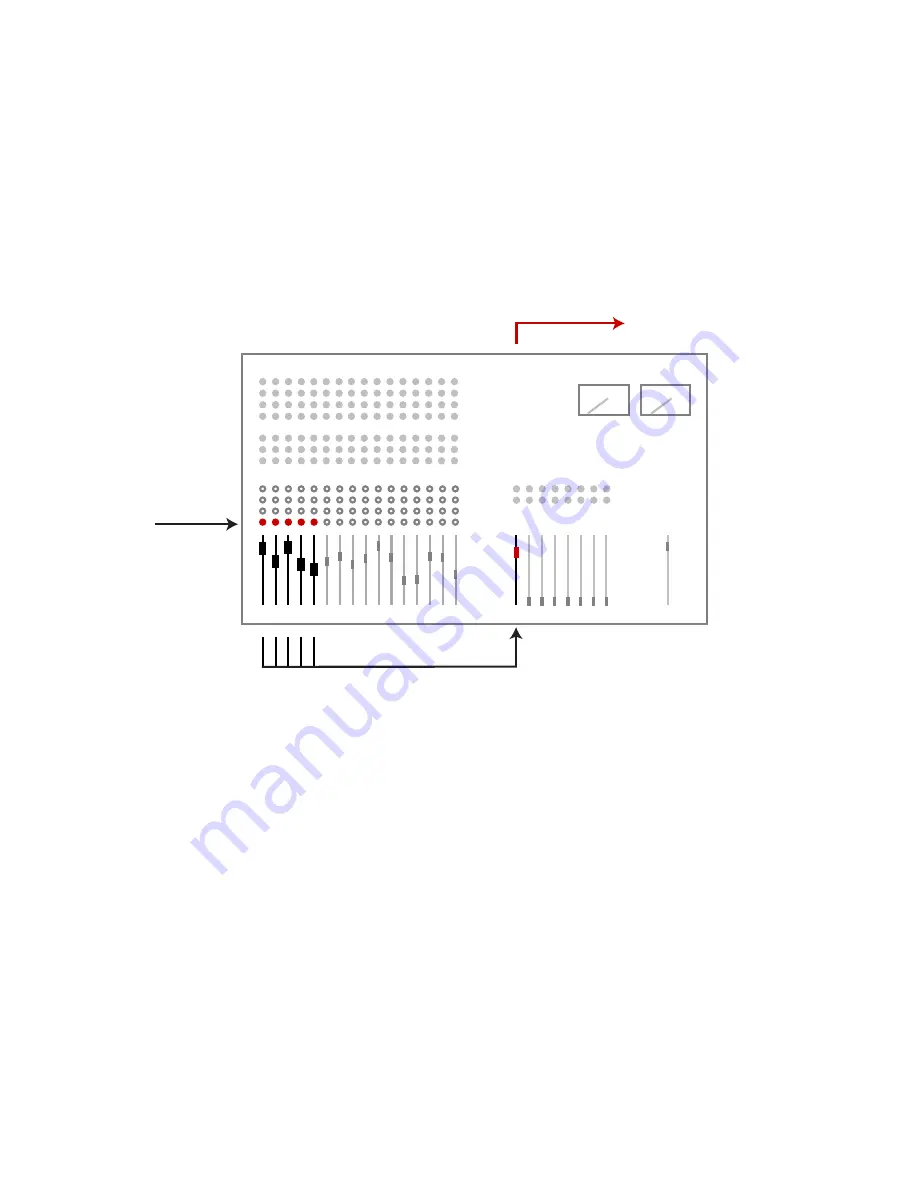
23
AN-16/
i
v
.2 i
Nput
M
odule
u
ser
G
uide
Submixing
When creating a personal mixing system it is important to consider exactly what content should be sent
to the performers. Most performers will not need every element of a drum mix, for example. Instead,
providing the kick, snare and a stereo mix of the remaining drum kit elements can provide a better
monitoring experience. After all, the performer’s job is to play and sing, not engineer a mix. An overly
complex set of channels actually defeats some of the benefits of a user-controlled monitor mix.
5 channels
assigned to
bus #1
combined as a group
to one fader
output is a single
audio signal
Five channels are combined and can be output as a single channel of audio.
As an example, all the channels of the mixing console devoted to drums can be assigned to a bus. The
relative mix of all the components of the drum kit would remain the same; the levels are based on the
individual channel’s level settings. By sending all the drum channels to a bus, the entire drum kit’s volume
can be raised or lowered from a single fader. Patching the output of that bus into the AN-16/i v.2 allows
the performers to hear the submix on a single channel of a personal mixing system and control its level in
their mix.
Stereo Submix
A stereo submix with panning can be created by using a pair bus outputs. Stereo submixes preserve the
left-right positioning information for a group of related channels (drums, singers or horns, for example)
and can more accurately reproduce the spatial relationships between the elements of a live mix. This
allows the performers to make a mix that more closely replicates the performing ensemble’s physical
layout while at the same time allowing them to monitor at a lower listening level because each element
can be heard more clearly.
Signals for the stereo group are assigned to two bus outputs, usually consecutive numbers such as 1 and
2, or 3 and 4. The stereo pan (or left/right balance) from the source audio is then set by using the mixing






























